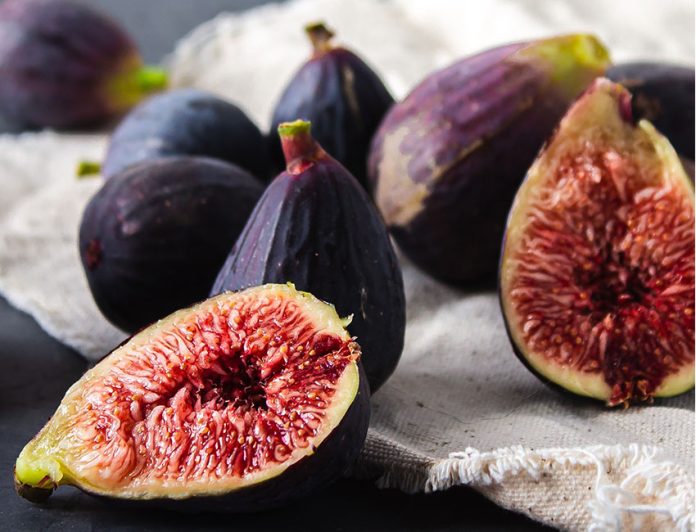At this time of year, it’s not uncommon to encounter vendors selling fresh figs, blueberries and blackberries in wheelbarrows in the parking lots of grocery and big-box stores. And where these fruits are cultivated, they’re available at mercados and tianguis as well.
I was fortunate to find about a dozen boxes of fresh figs in the produce section of a small local grocery store, tucked next to containers of cherry tomatoes and blueberries. At only 59 pesos for almost a pound (18 figs of various sizes), I thought it was quite a good deal and walked out happily with four boxes in my cart.
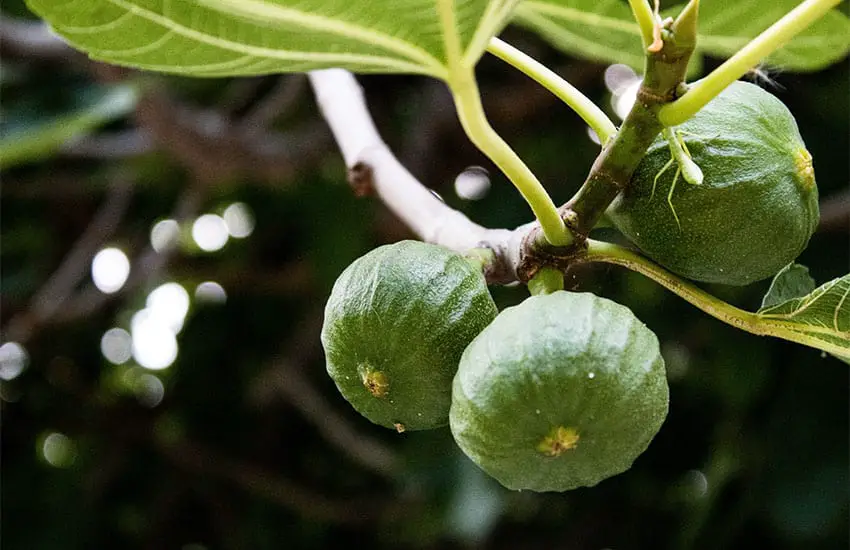
Now what, I thought? Fresh figs are such a delicate, delicious treat, and their short season and even shorter shelf life means you have to seize the moment. Sweet and delicious as they were, I knew I could only eat so many before they went bad. And so here we are.
Mexico’s Black Mission figs are thought to have been brought from Spain by missionaries in the early 1600s. Their harvest season is from July to the end of September or the first cold snap of the winter season. The states of Morelos, Baja California Sur, Veracruz, Puebla and Hidalgo produce the most.
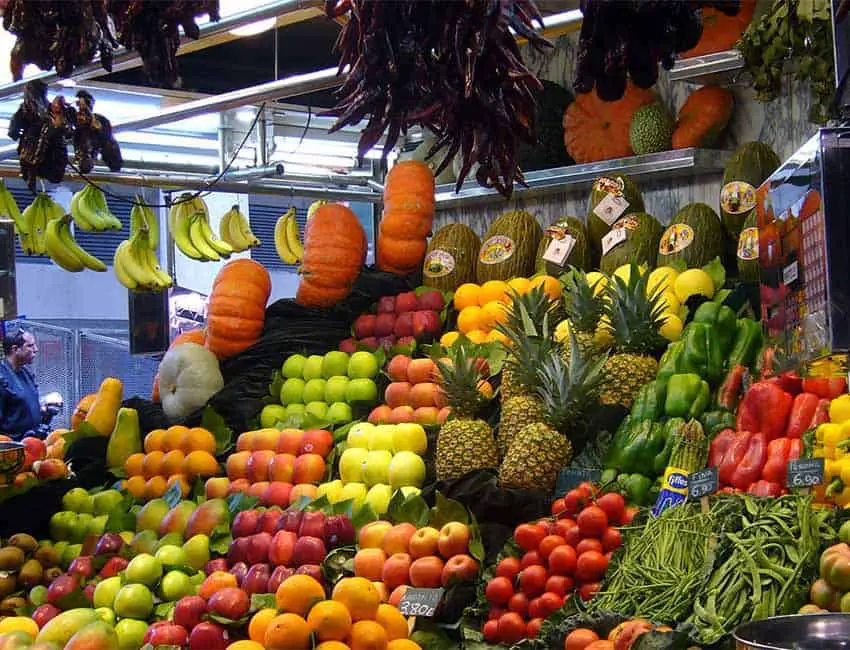
Figs are thought to be the oldest fruit in history and some scholars say it was a fig — not an apple — that was the “forbidden fruit.” In Michelangelo’s famous fresco on the ceiling of the Sistine Chapel, the Tree of Knowledge is a fig tree. And fig leaves are what’s used in this and other of his paintings to cover the “private parts” of the nude figures, including Adam and Eve.
This practice was adopted formally by the church in 1563 at the Council of Trent with the declaration that, “all lasciviousness depicted in religious art must be covered with carefully placed fig leaves.” One could say that, historically speaking, the fig leaf was the first article of clothing ever depicted.
The fig’s place in religious art and doctrine is universal, and it appears as a sacred tree in all major religions, from Buddhism to Islam to Catholicism and Hinduism. Figs were thought to have an array of health benefits and were fed to competitors in the original Roman Olympic Games as part of their diet. It is one of, if not the first, fruit trees to be cultivated.
Nowadays, we know that fresh figs contain high levels of antioxidants, fiber, B vitamins and important trace minerals like calcium, iron and magnesium.
I’ve always thought figs were pretty, with their dark brownish-purple skin, cute bulbous round shape and delicate red-pink insides. Turns out each fig is a flower turned inward, and the juicy soft flesh is made up of 1,500 tiny flowers.
If you’ve never tasted one, I strongly encourage you to do so! The flavor suggests sweet vanilla, with maybe a touch of apricot or pear. I find them irresistible. Eat figs on their own, sliced into a salad of arugula or spinach, or paired with any number of strong-flavored cheeses.
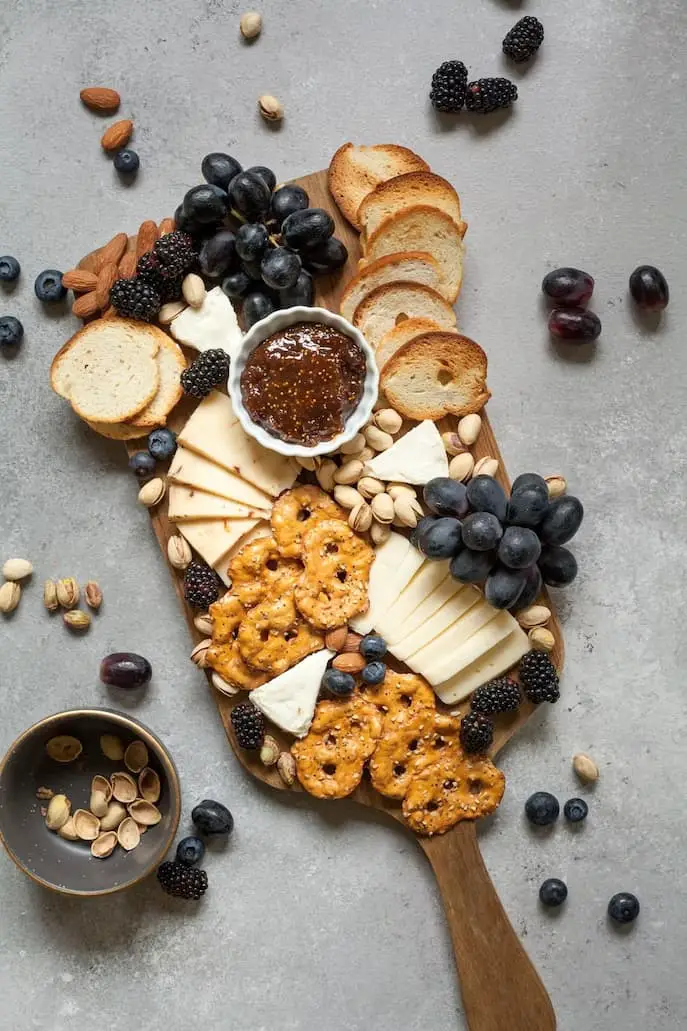
Fig Jam
- 1¼ lbs. ripe figs, cut in small dice (25-30 figs depending on size)
- 2½ cups sugar, divided
- 2½ Tbsp. fresh strained lemon juice
- 2 tsp. balsamic vinegar
In a large bowl, toss chopped figs and half the sugar. Cover bowl and refrigerate for 1 hour.
Transfer figs and sugar to a small stainless or enameled saucepan. (Pan should not be more than twice the volume of the fruit/sugar mixture.) Bring to a boil over medium heat, stirring occasionally. When the mixture comes to a boil, scrape it back into the bowl and cover it again. Let cool, then refrigerate overnight.
The next day, put the fig mixture back into the saucepan. Have a skimmer or wide, flat spoon and bowl of water handy. Place a small plate in the refrigerator. Bring the fruit back to a boil over medium heat, stirring.
When mixture comes to a boil, stir in remaining sugar, lemon juice and vinegar. Boil, stirring, until the mixture is thick but not too concentrated, 10–15 minutes. Skim off any foam, dipping the skimmer/spoon into a bowl of water to remove the foam.
To test for doneness, remove the chilled plate from the refrigerator; place a spoonful of the jam on it. Wait about 20 seconds, and tilt the plate. The jam should only run slightly, and slowly. Boil a little longer if it seems too runny, but take care not to overcook it. It should be spreadable.
Transfer to a small bowl, glass container or sterilized jar. Cover and let cool, then refrigerate. Makes about 2 cups
Fig and Cheese Bites
- About 2 oz. of soft, fresh goat cheese, queso fresco or blue cheese
- 1 Tbsp. balsamic vinegar
- 12 fresh figs, washed and drained
Using your fingers, roll cheese into 24 half-teaspoon-sized balls. Cut the figs in half. Press a cheese ball into the center of each fig.
Arrange on plate or platter. Drizzle with the vinegar. Serve within an hour.
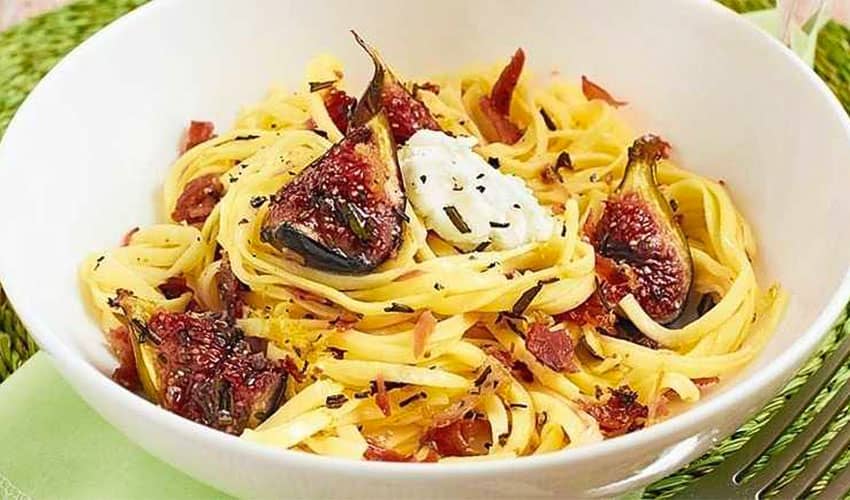
Fig and Prosciutto Pasta
- 8 thin slices prosciutto (about 6 oz.), divided
- 4 Tbsp. olive oil
- ½ cup finely chopped onion
- 2 tsp. minced garlic
- 1 Tbsp. fresh ground black pepper
- ½ tsp. red pepper flakes
- 2½ cups chopped fresh figs (about 10–12)
- 1 lb. spaghetti, linguini or penne
- 1/3 cup chopped fresh parsley
- 1/3 cup toasted pine nuts*
- Grated Pecorino Romano cheese
Preheat the oven to 400 F (200 C). Bake two slices of prosciutto on a sheet pan until crispy, about 7 minutes. Cool, then crumble into pieces. Set aside.
Roll up the remaining six slices of prosciutto lengthwise; thinly slice into strips. Set aside.
Heat the oil in a small pot over medium heat. Cook the onion, stirring, until soft and translucent, about 5 minutes. Add the garlic, sliced prosciutto, black pepper and red pepper flakes; cook about 4 minutes, stirring often.
Gently stir in the figs, then lower the heat to medium-low. Cook until the figs begin to break down, about 4 minutes. Remove from heat and keep warm.
Cook the pasta following the package’s instructions; drain, reserving 1 cup of pasta water. Return the pasta to the pot and stir in the fig mixture.
Over medium-high heat, stirring constantly, add as much pasta water as needed (about ¼ cup) to lightly coat the pasta strands. Once the pasta is piping hot and well-mixed, add parsley and toss.
Serve sprinkled with toasted pine nuts, crispy prosciutto crumbles and grated cheese.
*To toast the pine nuts: In the oven, spread nuts on a sheet pan. Bake at 350F (177C), stirring occasionally, until golden-brown, 5–10 minutes. If using a stovetop, cook nuts in a dry skillet over medium-low heat, stirring constantly, until lightly golden brown, about 3 minutes.
Janet Blaser is the author of the best-selling book, Why We Left: An Anthology of American Women Expats, featured on CNBC and MarketWatch. She has lived in Mexico since 2006. You can find her on Facebook.
